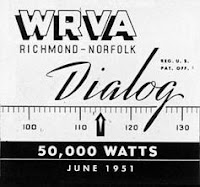It's a fact, our hiring standards can be lax. Radio work does not require a masters degree, a college diploma -not even a GED. We don't do a lot of background checks. Hell, I think most of us have met one or two that were borderline illiterate. So in that mix we do turn up the occasional felon. So today I'd like to revisit a few highlights.
 680 WRKO-AM
680 WRKO-AMThomas
Finneran has been doing "
Finneran's Forum" for years. The former House speaker quit to become a high-paid lobbyist. In 2007 the well connected
Finneran took over the morning drive spot on
WRKO. More
here. Despite crappy ratings,
Entercom extended his contract into 2009. He was charged with perjury and obstruction of justice. He
pled out, they dropped perjury he was disbarred, lost his pension, paid a fine and got 18 months probation. More
here.
93.3 KMXVGregory D. Sage, was busted in 2007 on 5 counts of child pornography.
Oooh that hurts the brand. More
here. He did afternoons
DJ'ing at
KMXV starting in 2002 and was promoted to promotions manager in 2006. Sage also worked at
KCKC doing a little traffic and promotions.
600 KOGO-AMRoger
Hedgecock had to resign as mayor of San Diego in 1985 over 13 convictions for perjury relating to his failure to failure to report over $360,000 in campaign contributions. He paid a fine and it was reduced to a misdemeanor. He spent a year in custody and was disbarred. He went on to host the Roger
Hedgecock Show on
KOGO and
KSDO-AM in California. He's been on air for 20
years and is nationally syndicated. More
here, and
here.
770 WABC-AMRush Limbaugh, the right-wing pundit has been repeatedly caught with illegal prescription drugs. In 2003 he used his maid
toscore 4,350 Oxycontin in one 47-day period. (Normally that many would get you a charge of intent to sell) In 2006 it was Viagra without a prescription in his bag at Palm Beach Airport. Then he was accused of doctor shopping to stock up on Oxycontin,
Lorcet,
Xanax, and
Clonodine. Under Florida State law that's also a felony. For the
Oxy he was booked and and had to make a $30,000 payment to the State of Florida. All other charges evaporated. More
here.
N6FRVThis is a little more academic... should a felony conviction count against an amateur license? Robert
Landis of
Atascadero, California, was convicted in 1991 on two felony counts of lewd
behavior with a minor. As a result,15 years later while he is still in prison... in August of 2006 the FCC initiated a hearing, in November he got
revoked. More
here.
97.1 KLSPYou can't beat
KLSP, the radio station is in Angola prison, every one of it's air staff are felons. many are multiple felons. Operating since 1986 it operates at 100 watts and reaches about 6,000 people. I don't think any of them are former members of congress. More
here.
----------UPDATE 02/25/09-----------
...To drive the point home, there was another conviction just yesterday.
98.1 WTKE & 1400 WTKE-AMIn 2005 "the Ticket" added Charles "Scott" McKinney to their morning show
The Morning Wrap. McKinney was sentenced to five years in prison on a conviction for 11 counts of fraud and grand theft. He had been soliciting investments in a front company claiming to be syndicating his program. More
here.



































